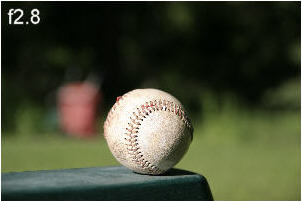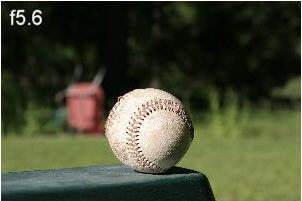
|
Tamron SP AF17-50mm F/2.8 XR Di-II LD Aspherical [IF] Review
 Macro (Close Up)The maximum magnification of the Tamron SP AF17-50mm F/2.8 XR Di-II LD ASPHERICAL [IF] is :1:4.5 or 0.22x and is obtained at 50mm. Not bad for a wide to normal zoom, but not really exceptional. The Canon EF-S 18-55 is slightly better at 0.28x and the Canon EF-S 18-85 is slightly worse at 0.2x. Obviously the Tamron SP AF17-50mm F/2.8 isn't a "macro lens", but 0.22x is still useful for closeups.
The above image was shot at the minimum focus distance at the 50mm focal length setting Benefits of a fast lensThough the tests above concentrate on technical image quality, there are several benefits of a fast lens over a slow lens which aren't related to lp/mm or MTF measurements! The first is the ability to shoot at faster shutter speeds. While slow lenses with Image Stabilization can often be handheld at slower shutter speeds than would be possible with a faster lens, those slower shutter speeds may not be fast enough to freeze movement. For example let's say we have a Canon EF-S 17-85/4-5.6 IS and a Tamron SP AF 17-50/2.8. The IS gives you a 3 stop advantage in terms of the ability to handhold the lens, but the f2.8 lens is one stop faster. This means that at 17mm and f4 you can probably handhold the IS lens at a shutter speed of about 1/4s and get sharp images. Under the same lighting conditions you'd be shooting at 1/8s with the f2.8 lens at f2.8 and that's too slow for sharp handhold images. You'd really need to be shooting at about 1/30s with a non-stabilized lens to be reasonably certain of getting a sharp shot. So in this case, for a static subject, the IS lens would likely yield a sharper image. On the other hand, let's say you're shooting action at 50mm. While the IS lens might let you shoot at, say, 1/20s at f5.6, the non-stabilized lens would allow you to shoot at 1/80s at f2.8. For a moving subject, 1/20s might be too slow to freeze movement (resulting in a blurred image), while 1/80s might freeze the action enough to give you a sharp shot, so in this case the faster (f2.8) lens might yield the sharper image. The second advantage of a faster lens is the ability to shoot with a smaller depth of field and to better blur any distant background (note these two effects, while similar, are not the same). Below is a series of images shot at f2.8, f4 and f5.6. As you can clearly see, the background is far less distracting in the f2.8 shot than in the f5.6 shot due to the greater degree of background blur. If you're shooting portraits (and a 50mm f2.8 lens on an APS-C DSLR makes a good portrait lens), the additional background blur can make a significant improvement in your images.
NEXT -> Part V - Conclusions
© Copyright Bob Atkins All Rights Reserved |
|||||||
|
|



